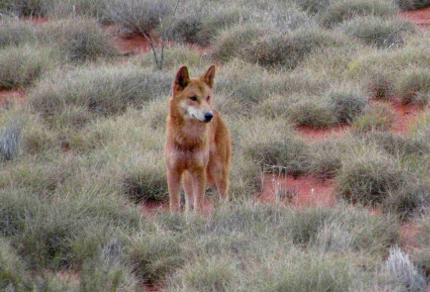Western Australia, Day 11
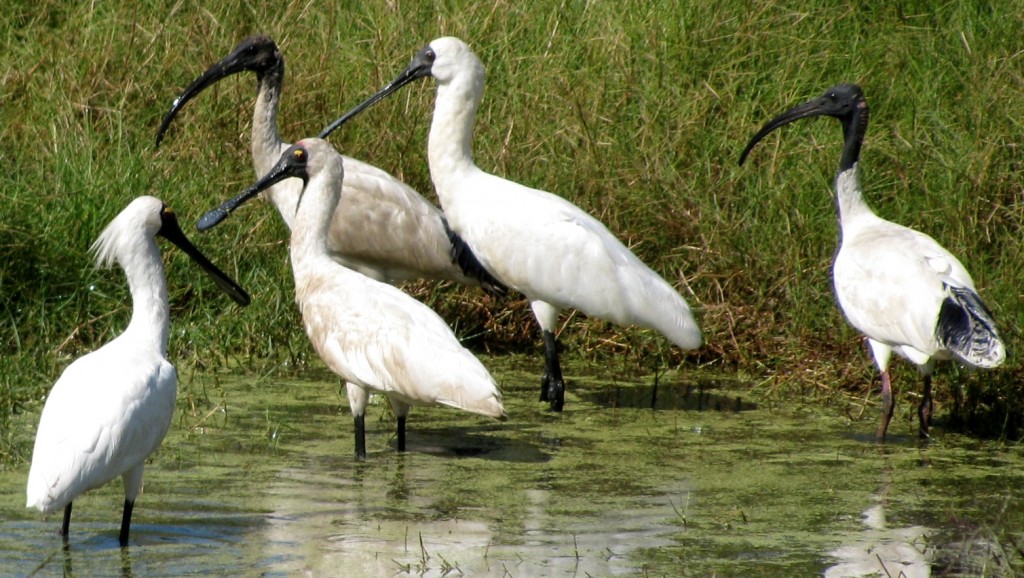
Royal Spoonbills and Australian White Ibises at Townsville Town Common Conservation Park (© Magi Nams)
Townsville: Three weeks after checking out the birding at the Townsville Town Common Conservation Park, I returned to the Common at dawn and joined members of the Townsville Region Bird Observers Club (TRBOC) for a 3-hour survey and count of the park birds. I soon learned that many pairs of eyes prove to be a definite advantage for spotting birds. I picked up tips on distinguishing between look-alike species and suggestions for sites to visit for new species. These birders were fast, some needing only a glimpse to identify a species, and others scanning roadside trees and wetlands with an almost uncanny ability to sight avian bodies camouflaged by leaves or reeds. In total, they recorded 49 species. I saw 36, was happy with that, and took new learning home in my pocket.
Western Australia: At Cunyu, the research crew were also stationed in dongas, but not surrounded by lush, irrigated lawn. The desert was their backyard, so they cooked outdoors over a campfire. All the dead wood on the ground was desert dry and burned readily, providing excellent fuel for fires. Toilet facilities were the desert, a shovel, and a roll of toilet paper. The laundry was a sink out back.
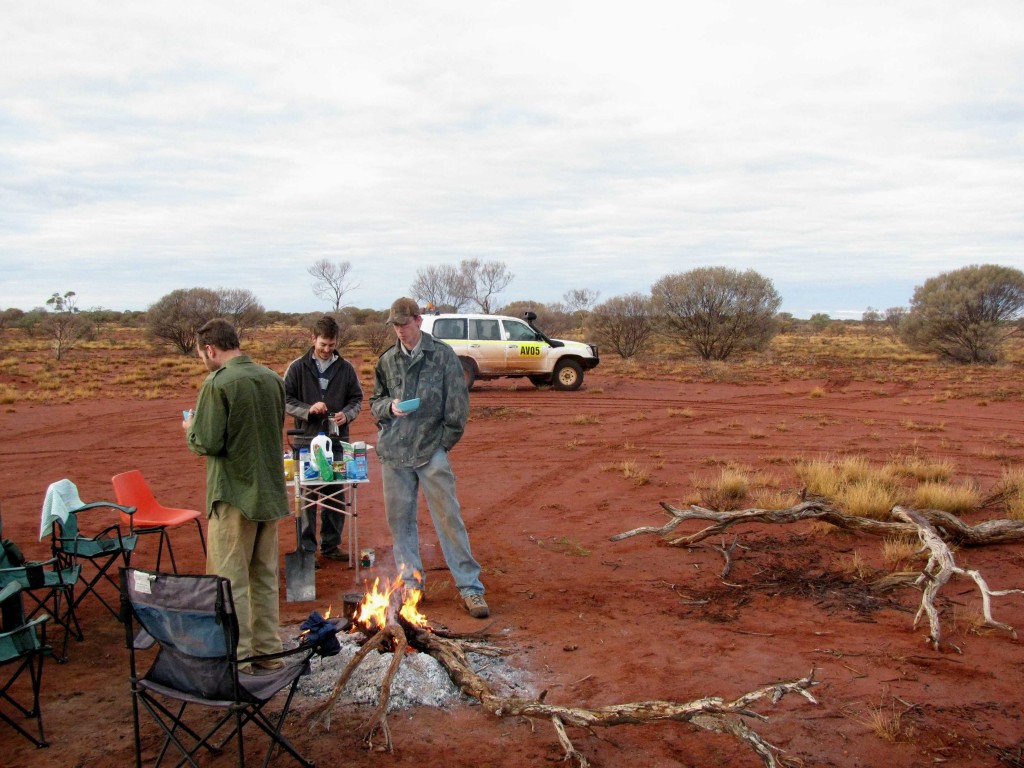
Breakfast at Camp at Cunyu Station, Western Australia (© Vilis Nams)
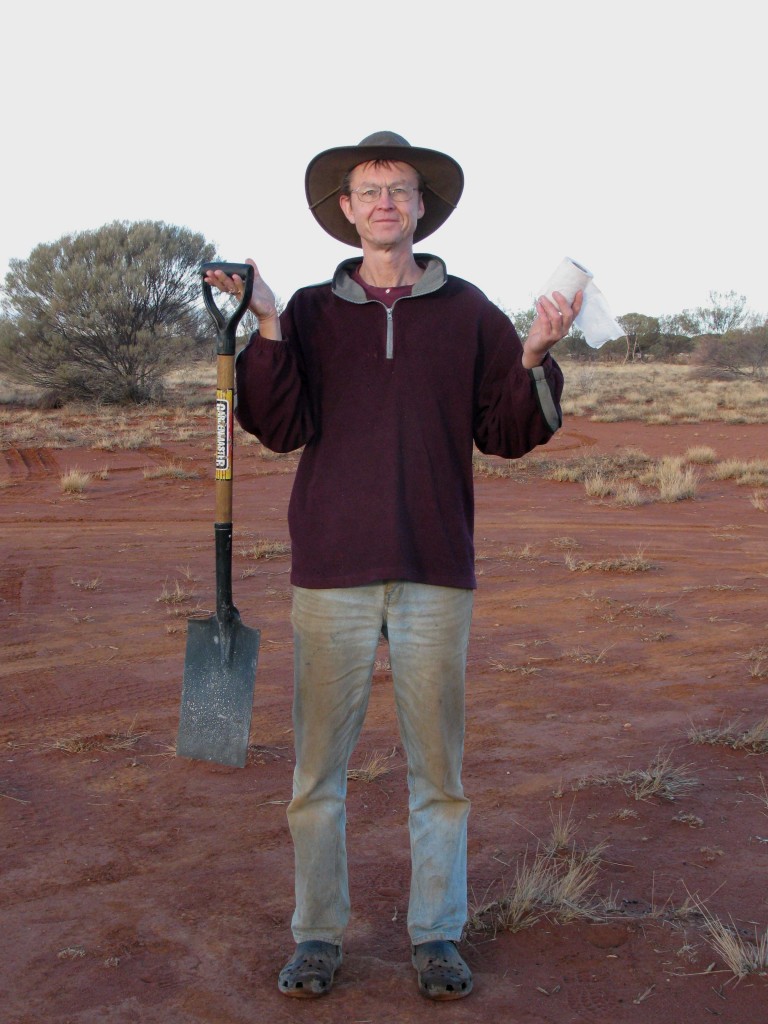
Vilis and Desert Toilet (© Janis Nams)
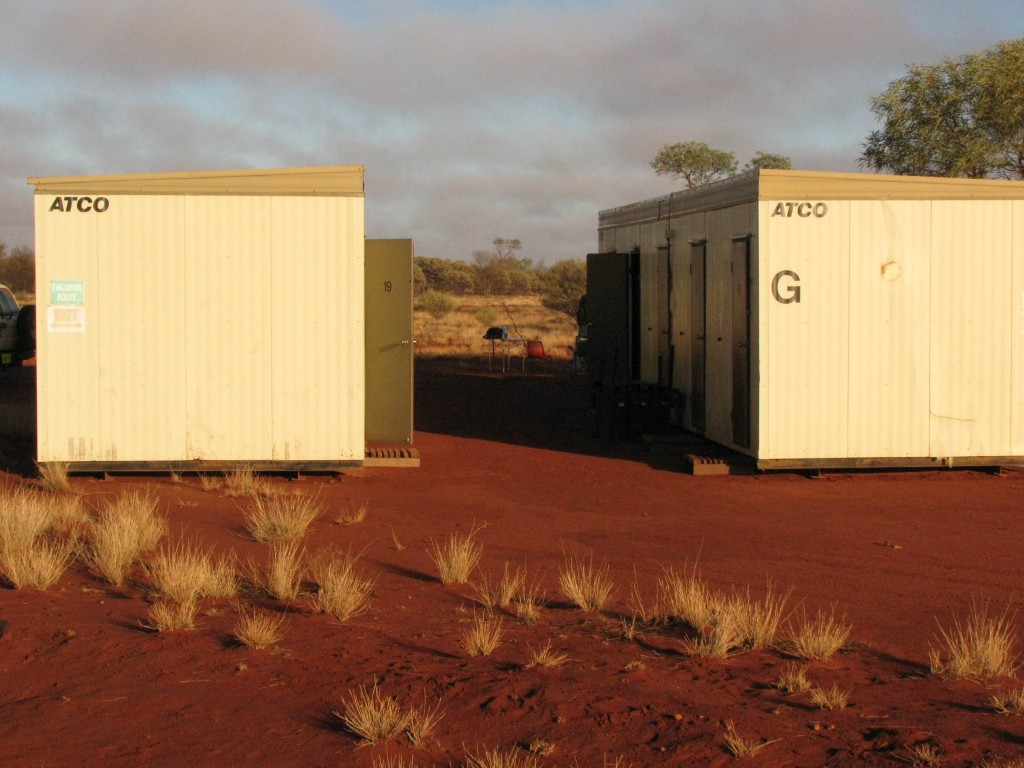
Dongas at Cunyu (© Vilis Nams)
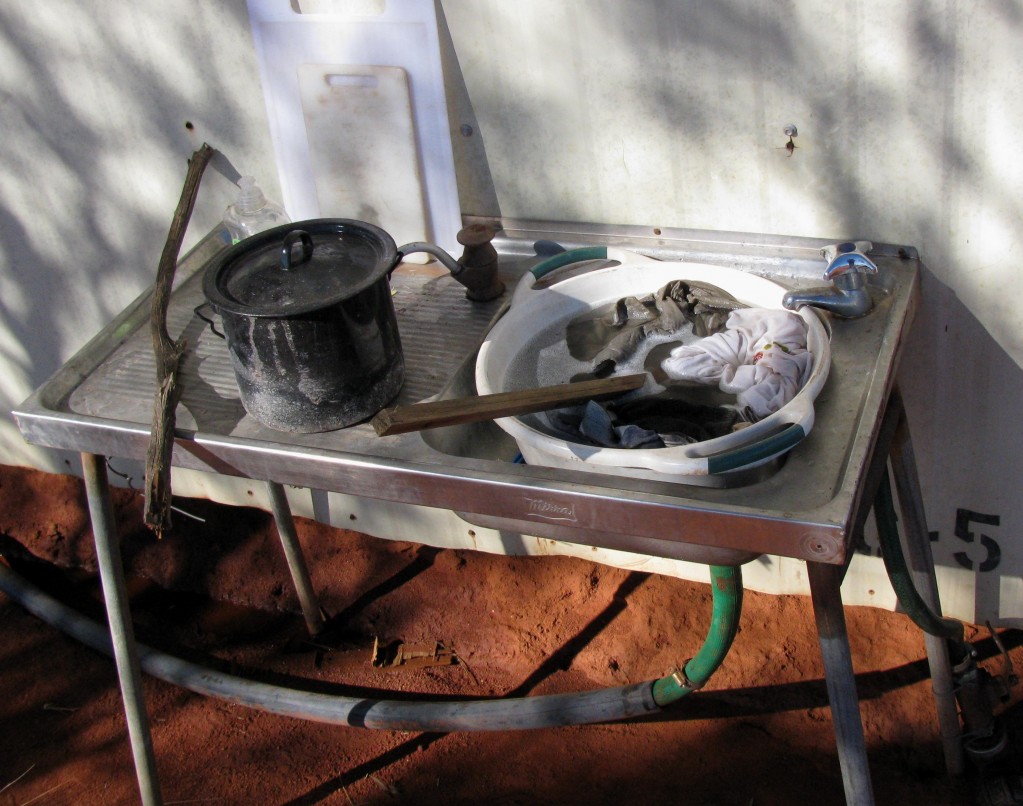
Doing Laundry (© Vilis Nams)
Like Yakabindi, Cunyu is a vast property, encompassing 3300 square kilometres of desert. However, unlike Yakabindi, it’s privately owned and the owners don’t bait (poison) dingoes. When the owner Ken, who used to be a scientist involved in range management, first bought the station, it was overrun with macropods and feral horses, donkeys, and camels. He hired professional hunters and built a fence around the property. The hunters shot tens of thousands of kangaroos and wallaroos during the first three years, as well as feral livestock. Now the station is nearly free of feral stock, and only a couple hundred macropods are killed each year by recreational hunters. The owner believes that dingoes play an important role in controlling populations of macropods and, thus, in maintaining healthy rangeland.

Dingoes on Cunyu (© Vilis Nams)
Today’s birds: black kites, great egrets, little egrets, royal spoonbills, Australian white ibises, magpie geese, rainbow lorikeets, nutmeg mannikins, whistling kite, magpie-larks, rainbow bee-eaters, masked lapwings, peaceful doves, bar-shouldered doves, brown-backed honeyeater, yellow-bellied sunbirds, green figbirds, forest kingfishers, Torresian crow, yellow honeyeater, brown honeyeaters, Australian pelicans, anhingas, comb-crested jacana, Australasian grebe, *black-winged stilts, Pacific black ducks, *gull-billed tern, welcome swallows, *fairy martins, *green pygmy geese, black swans, leaden flycatcher, brolgas, Brahminy kite, straw-necked ibis. (*denotes lifelist sighting)

